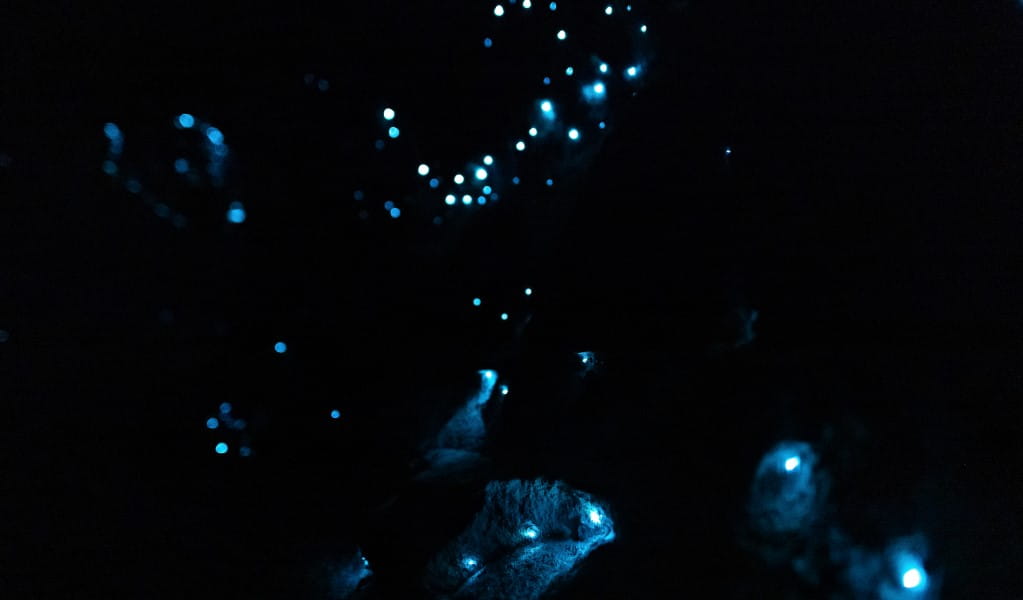Glow worms
Glow worms are the larval life stage of small flying insects. They live in dark, damp caves and rainforest gullies and are best-known for the starry, bioluminescent glow of their colonies.
Read more about Glow worms
Like most insects, glow worms have life stages where their bodies are very different. They grow in eggs for 7-9 days, spend 6-9 months in their larval worm-like stage, then spend 14 days encased in a caterpillar-like cocoon. In their adult form as flying fungus gnats, they live just 3 days where their only goals are to mate and lay eggs.
Bioluminescence
The light of a glow worm colony is magical for people to see, but for their tiny insect prey it’s a trap. Their glow is a type of bioluminescence – a chemical reaction in living things that makes light. This happens in a glow worm's rear-end which is transparent and allows light to shine through.
They use this light to lure prey towards sticky threads called ‘snares’ that dangle from their nests. Their nests and snares are made from silk that the glow worms secrete from their mouths. As small flying insects like mosquitoes or moths follow the light, they can get stuck in a snare. The glow worms then use their mouths to pull their prey into the nest before eating them.
Glow worm habitats
The best glow worm homes are sheltered and humid with limited air flow. Glow worms need darkness for their lights to shine and still, moist air so that their strings don’t tangle. They don't have thick skin, so moist air stops their delicate bodies from drying out. Glow worms also need running water nearby as this is habitat for the flying insects that they trap for food. This sort of habitat is often in caves, overhangs, gullies and abandoned tunnels like Glow Worm tunnel in Wollemi National Park.
Glow worm tunnel
In the early 1900s, a 387metre-long tunnel was built to connect the thriving mining industry at Newnes to Lithgow and the rest of Sydney. Now that it's abandoned, the dark, damp tunnel with a stream is a perfect home for glow worms.
The tunnel was likely found by flying adult glow worms living in nearby lush rainforests gullies. The stable and predictable conditions inside the tunnel led to a permanent glow worm colony.
Protecting glow worms
Seeing a glow worm colony shine is a special experience. To help protect the colony inside Glow Worm Tunnel and make it safer for visitors see them, NPWS took special precautions when upgrading the footpath inside. This meant doing a lot of construction work by hand and working under red lights to minimise noise and light disturbance. Workers also had to keep the stream beside the tunnel path clean to make sure they didn’t impact the glow worms’ food source. Learn more about the special construction project at Glow Worm Tunnel in this video.
Visitors can play their part to protect glow worms as they explore the tunnel by keeping to the path, using red light torches and staying quiet. Doing this helps to protect the glow worms, but also gives you the best chance to see them. Unlike other bioluminescent insects like fireflies, glow worms can control their lights and will turn them off if disturbed.
What are glow worms?
Watch glow worm expert Dr David Merritt explain what glow worms are and why they live in the tunnel.
Animal facts
- Common name
- Glow worm
- Scientific name
- Arachnocampa richardsae

